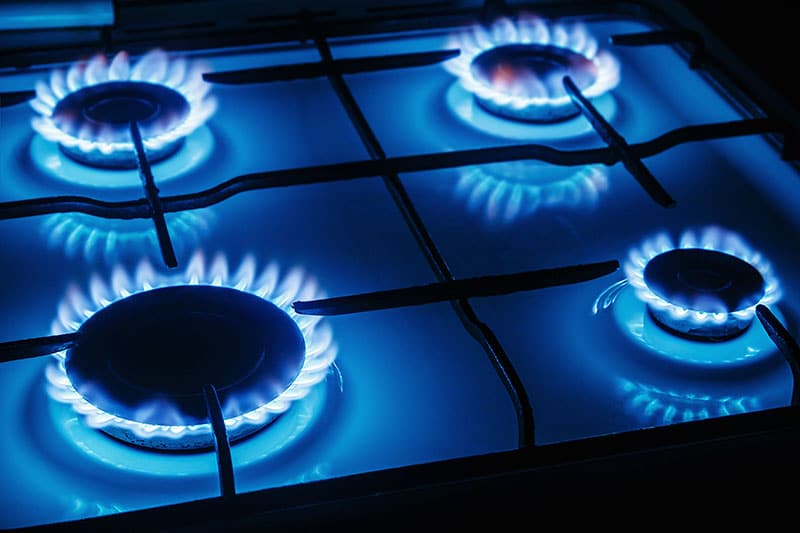It’s important to do what you can to keep your home as safe as possible for you and your family. Carbon monoxide is a deadly but silent threat that can quickly and quietly kill – here’s what you should know about it and how to get help with heating solutions that pose the least risk to the people living in your home.

What Is Carbon Monoxide?
What is carbon monoxide? Carbon monoxide is an odorless, colorless, natural gas that is produced spontaneously by fire and can result in severe illness and death. CO gas is produced when wood, charcoal, or gases like propane or butane are burned in areas with poor ventilation. Gas stoves, space heaters, wood burning stoves and torches are examples of potential sources of carbon monoxide gas.
Why Is Carbon Monoxide Dangerous?
Carbon monoxide is dangerous because when ingested, it competes with oxygen for space in the bloodstream, depriving the heart, brain, and other vital organs of necessary oxygen. Carbon monoxide gas can swiftly induce loss of consciousness before a person even knows anything is wrong and with prolonged exposure, CO gas can result in brain damage or death.
Signs of Carbon Monoxide Poisoning
There are many signs of carbon monoxide poisoning and which ones present are largely dependent upon the amount of deadly gas in the environment. Prolonged low-level exposure to carbon monoxide gas can cause mild to moderate dizziness, headaches, personality or mood changes, changes in vision, and new or worsening difficulty with coordination.
Other common symptoms include but are not limited to:
- Trouble breathing
- Chest pain or tightness
- Nausea
- Vomiting
The most serious affects of carbon monoxide exposure include irreversible brain damage, permanent hearing and vision loss, and death. The half life of CO in open air is about four hours, and it takes about twice that to completely clear a person’s system of carbon monoxide. If a person was exposed to the gas for too long, the damage to critical organs will still be present even after the CO is gone.
Carbon Monoxide Poisoning Prevention
Protect yourself and the loved ones in your home from CO poisoning by scheduling seasonal maintenance for your furnace, wood burning stoves, etc. Other precautions you may take to ensure that your house and anybody inside it are safe from carbon monoxide poisoning include:
Put a carbon monoxide detector in your home and update the batteries at least every 6 months. Ask your HVAC technician where the CO detector should be installed and if you need more than one due to the size or layout of your home. If the detector is hung too high, for example, it’s difficult to notice a
If the detector is hung too high, for example, it’s difficult to notice a gas-powered equipment to heat your home, whether or not there is a power outage. Avoid burning charcoal or natural gases indoors. Always keep generators outdoors, and never use one inside. Even if you leave the garage door open, don’t ever leave a vehicle running, especially if the garage is attached to your home.
Indicators of a potential carbon monoxide issue in your home includes but is not limited to the following:
- Dark, sooty black marks over the front of gas flames
- Brown or yellow staining around fires, boilers, and stoves
- Smoke buildup indoors
- Gas heaters or other appliances with yellow flames instead of blue
- Pilot lights that often blow out
You may notice one or more of the above before your carbon monoxide detector alerts you. You should take the same steps that you would if your CO detector went off, described below.
When Is It an Emergency & What Should I Do?
The detection of carbon monoxide or the suspicion of its ingestion is always an emergency. If you suspect carbon monoxide is circulating in your home or business, take the following steps:
- Turn off the appliance suspected of causing the leak and open windows to air the space. Leave the home immediately. If you cannot turn off the appliance, you should still take these steps. Allowing windows to stay closed could cause a gas buildup and potential explosion.
- Do not allow anyone back into the building until you have been cleared to do so by emergency responders.
- Get medical help immediately if you suspect you or someone else may have been exposed to CO gas. Call 911 or go to your nearest emergency room.
- After the appliance has been turned off, your home or office ventilated, and can go back inside, you should contact an experienced HVAC technician as soon as possible.
- Use the suspicious appliance only after it has been thoroughly tested, repaired, and found to be safe by a professional.
CO gas can be deadly before a leak is even identified. It’s a myth that carbon monoxide smells like rotten eggs; that odor is caused by propane or natural gas, which contains an additive that makes it smell unmistakably like sulphur. CO does not have additives and is completely odorless.
It can take one to two hours to notice symptoms of carbon monoxide poisoning at moderate levels of exposure and at higher levels, as little as five minutes. It’s critical to make sure you have a carbon monoxide detector in working order and that you check its operation frequently, since dealing with CO exposure is costly – in more ways than one.
Call N.E.T.R., Inc. for Trusted Heating Service & Repair
Carbon monoxide exposure may cause severe injury or death and must be taken seriously. At N.E.T.R., our Mitsubishi Electric Diamond Elite contractors can help you detect, prevent, and handle carbon monoxide emergencies. Contact us today for more information by calling (781) 933-6387.
